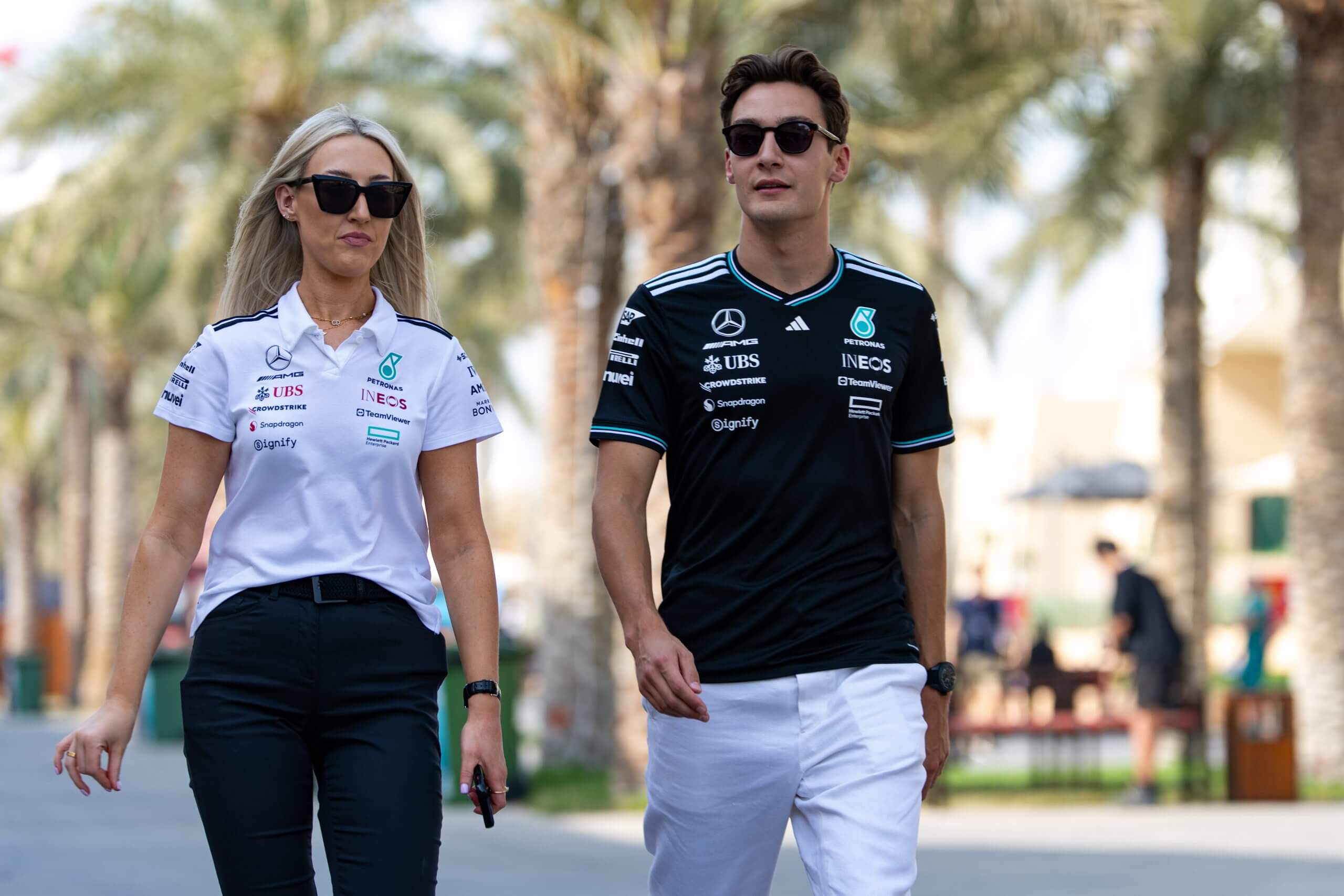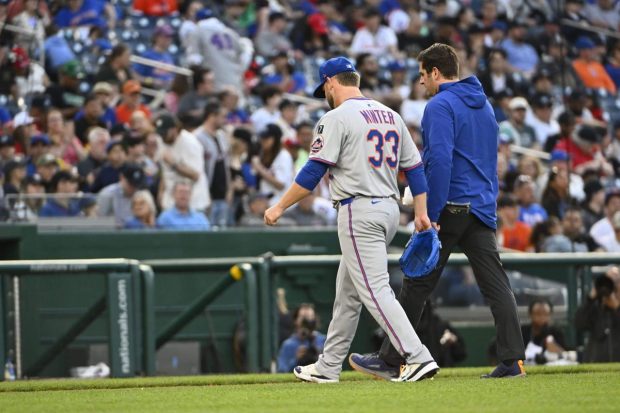
SAKHIR, Bahrain — FIA president Mohammed Ben Sulayem’s first appearance at a Formula One race in 2025 was always going to be an important moment in the story of the season.
On Friday morning, the FIA, F1 and the sport’s power unit suppliers will gather for a pivotal meeting about the future engine technology direction amid discussions over a future return to louder, simpler V10s.
Advertisement
But when Ben Sulayem joins with F1’s other powerbrokers in Bahrain on Friday, he will do so under intense scrutiny of his presidency and facing major questions about how the FIA has evolved under his stewardship. The situation has escalated quickly this week.
Ben Sulayem’s time at the helm of the world motorsport’s governing body has been controversial — from clamping down on swearing by drivers (a topic that returned on Thursday after Williams racer Carlos Sainz said “s—” in a press conference) and their wearing of jewellery in car cockpits, to more serious allegations of interference with the result of the race or the safety approval of the track in Las Vegas. He was ultimately cleared by the FIA’s ethics committee on both allegations following an investigation last year.
Several senior figures have also departed the FIA since Ben Sulayem took over as president at the end of 2021. Yet arguably the highest-profile exit occurred on Thursday, when Robert Reid, the deputy president for sport, announced he had resigned due to what was described in his statement as a “governance crisis.”
It was a scathing indictment of the current regime at the FIA, which Reid said had suffered a “fundamental breakdown in governance standards” of late. “Motorsport deserves leadership that is accountable, transparent, and member-driven,” Reid said. “I can no longer, in good faith, remain part of a system that does not reflect those values.”
In December, the FIA approved a series of changes to how its ethics committee handles complaints. It also now directly reports to the president.
Reid’s announcement came less than 24 hours after David Richards, the boss of the UK’s motorsport federation, also attacked the FIA on transparency and governance matters, and said there had been a “shift in the moral compass” of the leadership of the organisation that is meant to look after the best interests of global motorsport.
Advertisement
Then, in the hours after Reid’s exit was revealed, the FIA’s former CEO, Natalie Robyn, gave her first public interview since her departure from the federation last May to BBC Sport.
Robyn said Reid’s resignation “clearly indicates there are serious ongoing structural challenges” at the FIA. She added that she felt “saddened” by steps that “threaten both the credibility and the long-term effectiveness of an important institution.”
The trio of bold statements heaped scrutiny on the current leadership at the FIA. And yet on Thursday in Bahrain, there was little that stunned Mercedes racer George Russell, one of the key spokespeople for the drivers on the grid.
“Every time we hear some news from that side of the sport, it’s not really a big surprise,” said George Russell, who is a director of the Grand Prix Drivers’ Association that serves as the F1 drivers’ union.
“It’s clearly a real shame to see, and somebody who’s very well respected within the sport and been there for so long (Reid, who won the World Rally Championship as a co-driver to Richard Burns in 2001).
“As we keep saying, it’s like, what’s next? It’s a shame to see. Hopefully, we get more stability sooner rather than later.”
Russell revealed that Reid sent the drivers a letter explaining his decision. He then claimed that any time the drivers have come together to try to get involved in significant issues with the FIA, they “didn’t really make much headway, and things seem to continuously be going in an unstable direction.”

Mercedes driver Russell outlined his thoughts on the developing situation in Bahrain on Thursday (Kym Illman/Getty Images)
Instead, Russell said the drivers had to put their trust in their teams and F1 itself to “work with the FIA to come to a common ground.” Because right now, of the three groups involved in making decisions about the sport’s future — the regulator, the commercial rights holder and the competitors — the “unstable direction” that Russell cited seemingly only concerns one party. It comes amid a critical point in defining the coming years for F1.
Advertisement
Firstly, there is the Concorde Agreement regarding the sport’s commercial terms, which is up for renewal at the end of the year.
These terms tie together F1, the FIA and the teams both commercially and from a governance point of view. Previously, both sides of the agreements have been signed and announced as such at the same time. But in Australia, F1 announced that only the commercial terms had been finalized for the next five-year cycle, and said the governance agreement would be “finalized in due course.”
Red Bull team principal Christian Horner admitted at the next race in China last month that it was “unusual to have a tripartite agreement signed by only two sides,” but he said the biggest thing for the teams was understanding “what they’re going to be paid.” Horner indicated it was up to F1 and the FIA to work out the next steps to finalise the governance processes and agreements. Talks are expected to progress in the coming weeks.
The more topical issue this weekend in Bahrain centers on F1’s future engine formula — ahead of the meeting on Friday to discuss a mooted return to V10 engines, something Ben Sulayem has previously said should be evaluated.
Although there is support from a couple of teams to go back to that engine formula in a few years from now and cut short the new power unit cycle starting in 2026, to make such a major change would require unanimous backing. This is highly unlikely to be reached given Audi (set to take over the Sauber team) and Honda (currently supplying Red Bull with engines before switching to Aston Martin for 2026) have both committed to new F1 engine programs from next year based on the coming new rules that will increase electrical systems and use fully sustainable fuels.
Speaking post-race in Japan last weekend about Friday’s meeting, Horner said there was a “collective responsibility to think about what is right for the sport,” which is true. It’s something that all sides can get behind and are eager to ensure moving forward, regardless of the motives involved and the natural politicking that is part and parcel of F1’s Piranha Club reputation. After all, a united sport is a strong sport.
But there is also a desire for stability that, as Russell highlighted, is not on display from the FIA right now, creating the ‘what next?’ feeling he relayed.
Advertisement
It’s in contrast to the fortunes of the F1 organisation (known as Formula One Management), which has enjoyed a surge in growth in recent years, resulting in a boom in revenue and more money being paid out to teams than ever before. Its CEO and president, Stefano Domenicali, has signed a new five-year contract extension to run F1, news of which was met with support throughout the paddock. Ben Sulayem faces re-election as FIA president at the end of 2025, but no opponent is currently coming forward to stand against him.
F1’s priority overall is to ensure that what happens on the track, in a year that is already shaping up to offer a close, exciting championship fight and with competition running right through the field, remains unaffected by what happens off it.
Yet as the powerbrokers try to detail what the sport’s future looks like, for a figure as high-profile as Reid to have departed his role and raised such serious questions about the leadership of F1’s governing body, it’s only increased the critical spotlight on the man at the very top, right when stability is needed to ease the important coming decisions.
(Top image: Peter Fox/Formula 1/Getty Images)
This news was originally published on this post .










Be the first to leave a comment